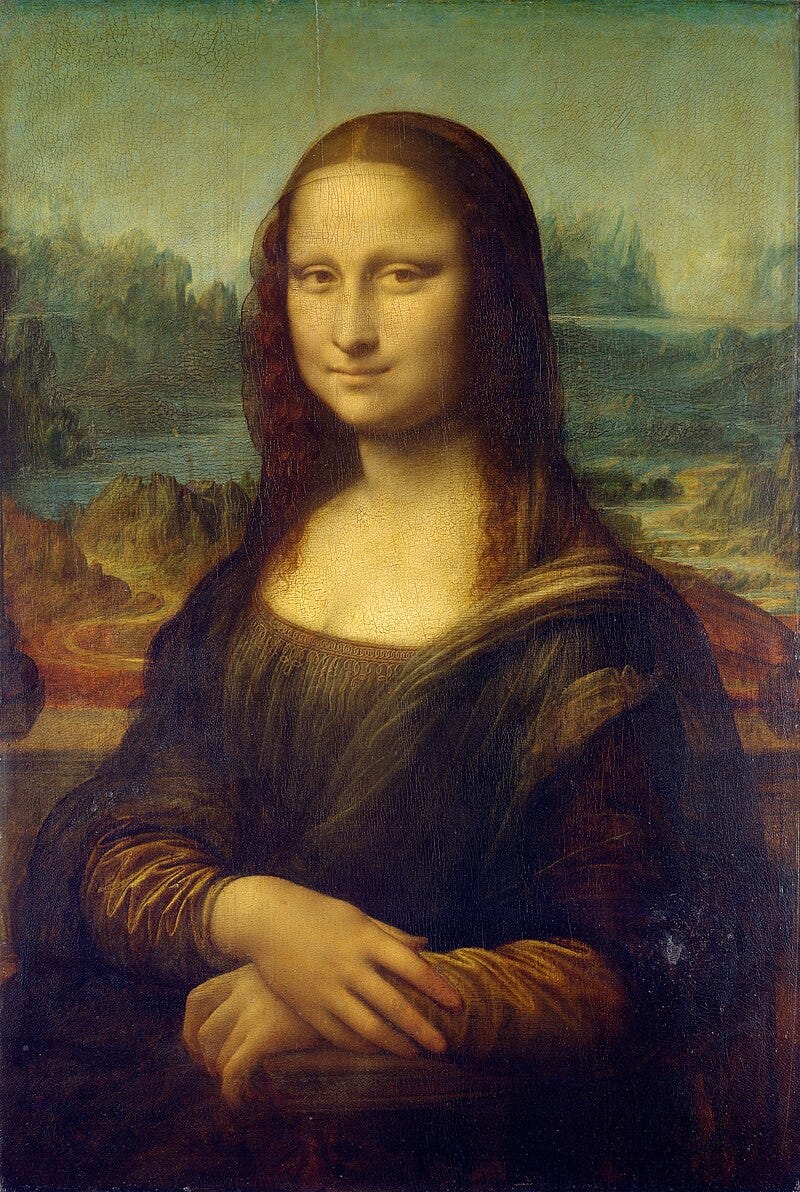Deep Looking - how to look at art
Part 1 - Why do we venerate celebrity paintings?
Introduction: we learn to see
Usually when someone who isn’t used to it goes to look at a well known work of art, he is struck with awe in a way that is very similar to celebrity adulation.
He’s seen this image all his life in books, films and on television, on posters, calendars, cards and adverts. He walks into the room and simply can’t quite believe he’s in the same room with this indescribably famous thing.
You know the paintings I’m talking about.
What you’ll see when you go isn’t quite what’s advertised…

This is peak celebrity-painting-worship. Similar scenes can be found in front of Michelangelo’s David and Botticelli’s Birth of Venus in Florence1. One has to ask, why are these people here? Have they ever thought about it? Is it just “Must see Famous Thing”?
Let’s talk about how we see and perceive things.
This is the first part of a deep dive into how we look at objects, what we can learn from how we see and perceive, and develop visual intelligence and overcome the negative effects of our distraction culture. What many people don’t know is that we learn to see, or we learn to perceive. Just looking at something doesn’t mean the same thing as seeing it. You’ve experienced this whenever you’ve been looking for something, your keys or a hair brush, and then found it was sitting in plain sight the whole time. We have to be taught to really see, to look with focus and a mind awake, receptive and attentive.
Developmental psychologists know that we learn visual intelligence as we develop our mental faculties in infancy and childhood. We can be trained as children to really notice things, to understand what we’re seeing, but our technological culture right now mitigates hard against that. Children aren’t taught to see, they’re taught to desire distraction. Even adults who were once used to prolonged concentration say their ability to read and notice the world has been diminished by their online habits.
I want to explore how we can re-learn visual intelligence, or learn it for the first time, by learning to look deeply and attentively at things that are worth looking at.




